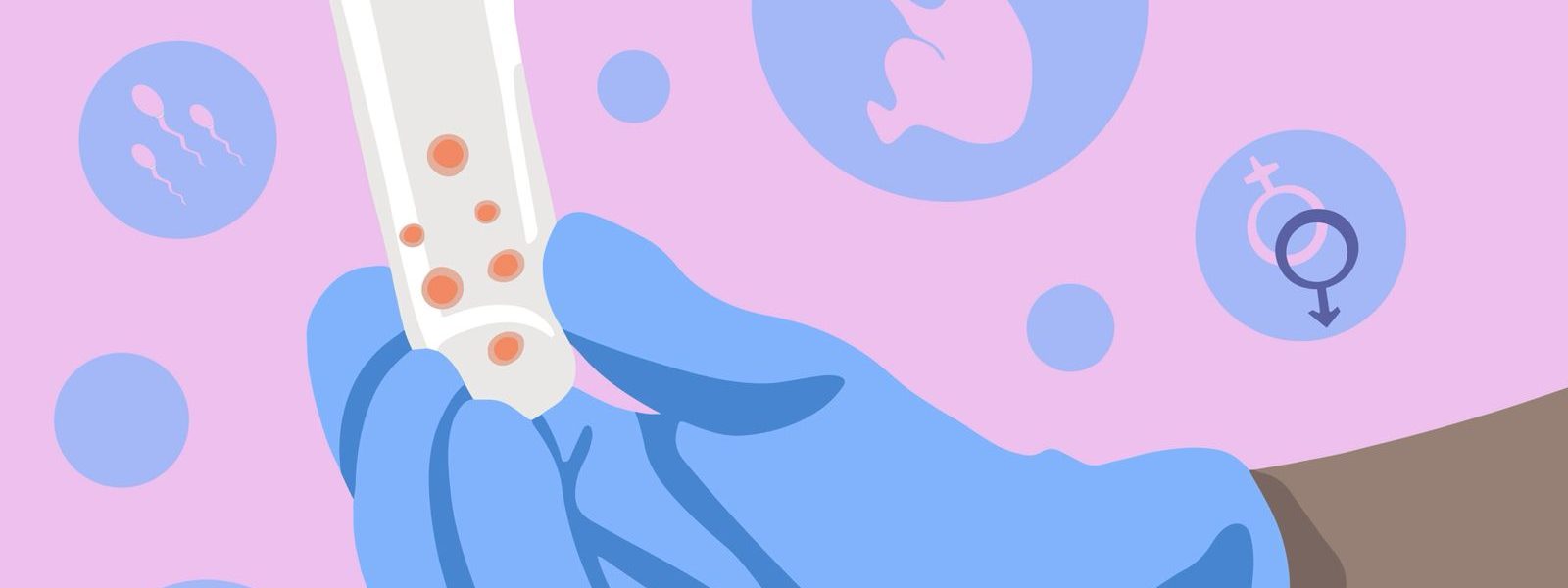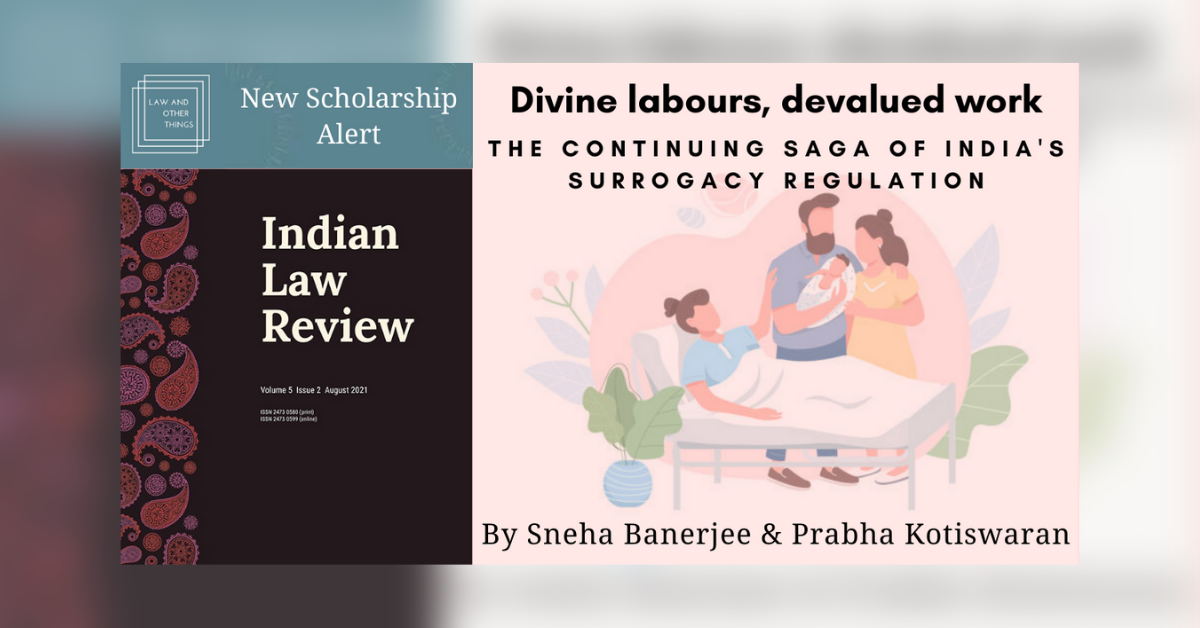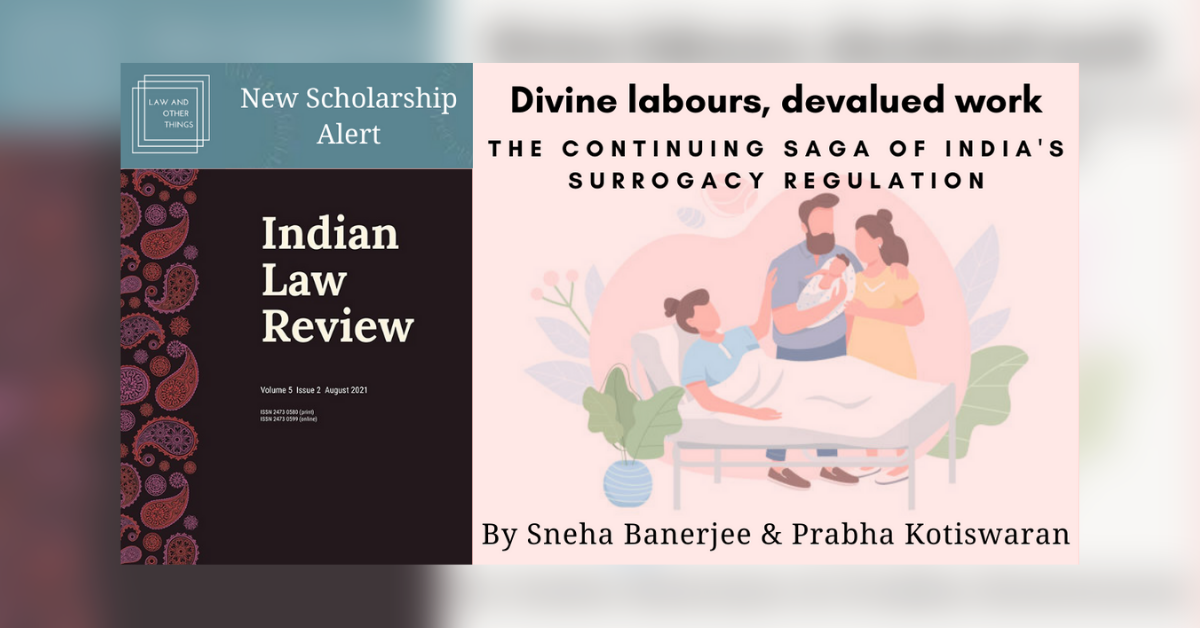Introduction
On 28th June 2025, the Bombay High Court (“the Court”) in a perplexing judgment ordered a Mumbai-based fertility clinic to preserve the frozen sperm of an unmarried deceased man after his mother moved to the Court claiming rights over the sperm. Justice Pitale, while adjudicating the case observed, that this petition raised important questions with regard to the manner in which the semen/gamete of a person is to be preserved after death, particularly in cases where the deceased, was unmarried at the time of his death. With the rising number of conceptions and births with the help of Assisted Reproductive Technology (“ART”), this case poses substantial questions in the ambit of medical law about the legal issues surrounding Posthumous Assisted Reproduction (“Posthumous Reproduction”) and its status under the Assisted Reproductive Technology (Regulation) Act, 2021 (“the ART Act”) and the Rules framed thereunder.
Posthumous reproduction refers to the process of using gametes preserved by a deceased individual, generally to continue the lineage even after the death of the person, through assisted reproductive technologies such as In Vitro Fertilisation. Commonly, it is the sperm that is preserved, however, fertilization by using eggs of a posthumous female is also a practice covered under Posthumous Reproduction.
Through this article, the authors aim to explore the legal lacuna surrounding the governance of the practice of Posthumous Reproduction in the Indian legal landscape. It analyses the issues posed by the absence of provisions governing Posthumous Reproduction in two parts. Firstly, the article examines the issue of consent of the posthumous individual. Secondly, it analyses the legal quandary of the inheritance rights of children conceived from the gametes of the deceased individual. Conclusively, it offers a suggestive amendment or framework to solve this predicament.
The Consent Conundrum
In the Indian legal landscape, as of now, the only statute that governs certain aspects of Posthumously Assisted Reproduction is the ART Act. Section 22(d) of the ART Act requires the written consent of all parties seeking Assisted Reproduction in the event of the demise or incapacity of either party for the clinics or banks to cryopreserve the gametes of the concerned party. Additionally, Section 24(f) of the ART Act requires the prior consent of the commissioning couple for the collection and, by extension, use of the preserved gametes posthumously. However, the ART Act presupposes the existence of a marriage between a heterosexual couple, and therefore it governs cases of that sort. This can also be implied from Section 2(f), which defines commissioning couple as an ‘infertile married couple’. In its essence, the ART Act governs Assisted Reproduction and not Posthumously Assisted Reproduction, and therefore excludes from its ambit various other conditions.
This also explains why the Court went beyond the ART Act to decide on the case and give an interim order directing the fertility clinic to preserve the sperm of the deceased. India lacks an unambiguous law governing cases on this subject matter, and the legislative response to ART has been piecemeal. In 2018, a 48-year-old woman in Pune used her deceased and unmarried son’s cryopreserved semen to give birth to a progeny through surrogacy, but the deceased individual had consented to the use of the semen after his death for this purpose.
The petitioners in the case cited a 2024 judgment wherein the Delhi High Court allowed the parents of the deceased person to retain the gamete, but even this might not be ideal in every case. In the absence of any explicit or implied consent of the person preserving their gametes, the court presupposes the intent of the person to conceive a child from the gamete they preserved. However, it might be possible that the deceased person intends to nurture a child personally and not in their absence. Another possibility can be that the deceased person preserves their then-healthy gamete for the future, as they might not be ready to nurture an offspring at that point in their life. If an unmarried individual preserves their gametes and subsequently dies without consenting to use them for posthumous procreation, is it appropriate for the Court to infer that the preservation was intended for future reproduction and that the court is correct in assuming that they were preserved to procreate, and did the individual anticipate the possibility of their own death?
The absence of any legal provision may induce the Courts to use the existing scattered provisions to decide in cases like this, but even if the Court uses the ART Act to regulate posthumous reproduction, it would still be insufficient, as it would only include married couples. Furthermore, regulating the posthumous reproduction through the ART Act may be detrimental as well. It requires the use of preserved gametes only for such purposes as the owner explicitly consents to. But this does not account for the cases where consent has not been explicitly provided. For instance, if a person intends to preserve the gamete for reproductive purposes but unfortunately dies in unforeseeable circumstances without explicitly consenting, the entire purpose becomes futile.
This issue also gives rise to ethical concerns. From the perspective of women’s reproductive rights, presuming consent risks diminishing a woman’s control over her body and reproductive future, she may be pressured into decisions she never would have accepted, or left with uncertain legal recourse if complications or disputes arise. Moreover, questions surrounding privacy loom large. How will personal, genetic, or medical information be protected? Who will have access to records of presumed consent, and how transparent will the process be? If consent is assumed, the safeguards around disclosure, revocation, and oversight must be vastly stronger to prevent abuse. Lastly, the ART Act only regulates ART for heterosexual couples. Even though children of homosexual couples cannot be legally recognised as parents, the position is consistently being challenged.
Progeny of the Posthumous and Inheritance Rights
After the legality of consent of the posthumous individual is resolved, the question of inheritance rights of the child conceived by Posthumous Reproduction has not received any statutory or judicial interpretation. While the ART Act and the Surrogacy (Regulation) Act, 2021 regulate assisted reproduction practices, they remain silent on the fate of a child born after the genetic parent’s death. This legislative void forces courts to adopt fragmentary analogies from property, succession, and bioethics law, an approach fraught with discrepancies.
Hindu Succession Act 1956 does not explicitly address posthumously conceived children. Section 8 of the Hindu Succession Act, 1956 Act, confines “issue” to children en ventre sa mere, those conceived before but born after the parent’s death. This narrow interpretation excludes posthumously reproduced children, creating legal ambiguity in intestate succession and undermining equitable inheritance rights.
Moreover, India lacks specific statutory provisions governing testamentary succession in cases involving posthumous reproduction, even where a will exists. A testator may have cryopreserved gametes with or without explicitly articulating their intended posthumous use. In both cases, legal uncertainty may arise if the child has not yet been conceived or born at the time of the testator’s death. This incoherence can result in the exclusion from testamentary benefits for children born from the cryopreserved sperm, thereby raising more complex issues of testamentary capacity, interpretative intent, and the adequacy of estate planning frameworks in addressing evolving reproductive technologies.
The absence of statutory time limits is another gap. Comparatively, jurisdictions like Australia and Canada impose explicit cut-offs for gamete use or child birth. For instance, the State of Victoria allows birth up to 45 months post-death. India operates without such safeguards. Lack of temporal guidance undermines legal certainty and may complicate intestacy distributions when estates are probated long before birth. Even internationally, the status of posthumously conceived children have been disputed. In Astrue v. Capato, the U.S. Supreme Court denied Social Security benefits to posthumously conceived children under the Social Security Act. In contrast, the New Jersey court in Estate of Kolacy recognised such twins as heirs. These judgments highlight the divergent judicial responses in the absence of clear legislation as well as in jurisdictions where temporal guidance is not clear.
Way Forward and Conclusion
In light of the challenges, reforms accounting for the same should be introduced. A comprehensive amendment to the ART Act should be introduced beyond the current narrow scope. It should account for the challenges faced by homosexual and unmarried individuals and should keep pace with evolving family dynamics. The amendment may require the explicit consent and purpose during the cryopreservation and a registry to record the intent of the preserving individual. Dedicated gamete banks may be prescribed to keep the process in check. Additionally, statutory time limits may be prescribed for the use of the gamete after the donor’s death to avoid prolonged legal uncertainties. Harmoniously, succession laws may be amended to include posthumous children as legal heirs, provided certain conditions, such as legal consent and statutory time limits are met. Lastly, ethical oversights such as counselling requirements should be incorporated to protect the dignity of the deceased and the rights of the children.
In conclusion, while the ART Act has significantly regulated assisted reproduction in India, it remains inadequate in addressing challenges posed by Posthumous Reproduction. It falls short of resolving the challenges posed by the absence of legal provisions concerning consent and forces the judiciary to use fragmented statutory provisions and inconsistent precedents to address the issue. Additionally, it fails to regulate the inheritance rights of the children conceived posthumously. This warrants the need for a forward-looking amendment, encompassing solutions arising from both national and international inconsistencies. The amendment must embrace inclusivity and a foresight in policy-making to uphold the spirit of scientific progress along with constitutional values.
Gaurav Tiwari is a sophomore at Hidayatullah National Law University, Raipur. His interests include Commercial Law, Constitutional Law and Criminal Law.
Ruchika Nagpal is a sophomore at Hidayatullah National Law University, Raipur. Her interests include Criminal Law, Public International Law and the Intersectionality of Law with Public Policy.
[Ed Note: This piece was edited by Abhishek Sanjay and published by Vedang Chouhan from the Student Editorial Team.]




